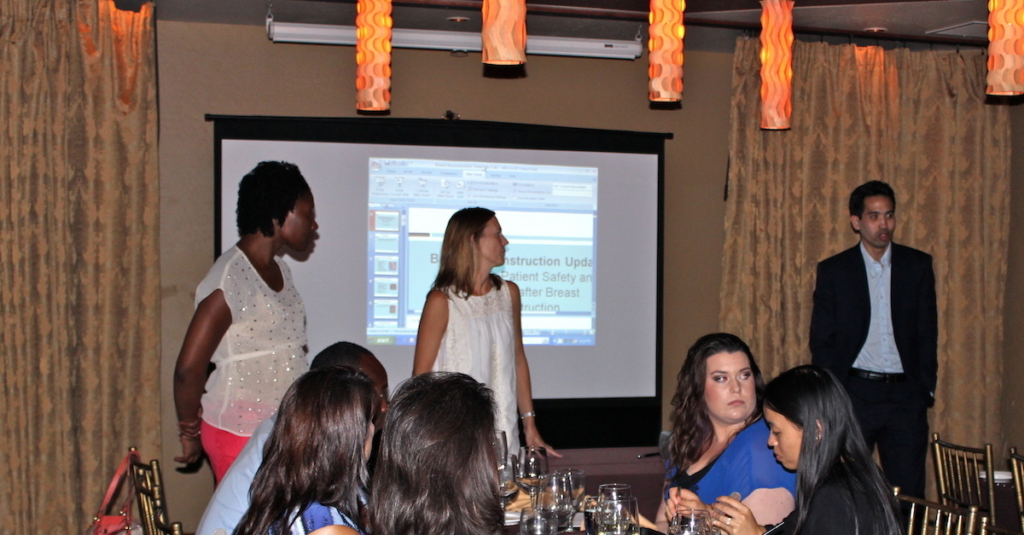Is there a magic age after which a woman can terminate her screening mammogram?
In 2009 the United States Preventive Task Force (USPTF) controversially made a number of mammogram age guideline recommendations. These included the statement that there was insufficient evidence showcasing the benefits or harms of mammograms for older women. It also noted the need for additional randomized clinical trials to provide information comparing continued screening after the age of 75 with stopping screening (1).
A new study challenges this ideology and indicates that women over the age of 75 may no longer receive a free pass. This study supports the mammogram age guidelines of the American Cancer Society (ACS), American Society of Breast Disease (ASBS) and the American Congress of Obstetricians and Gynecologists (ACOG) that women should receive an annual mammogram after reaching 40 and for as long as they remain in good health.
Mammogram Age Guidelines Background
Although mammography is not a perfect study it plays an important role in our ability to detect breast cancer at an early stage. Breastlink follows the recommendations of the ACS, ASBS, ACOG and others that women should start receiving an annual mammogram at the age of 40. If a women has a first degree relative (mother, sister or daughter) starting as soon as age 30 may be suggested (7).
Mammography, which is an X-ray picture of the breast, can identify breast cancer in women. Studies have shown, when interpreted with the help of computer aided detection, there is:
- Sensitivity (proportion of breast cancers detected in mammography studies) of 75- 94 percent.
- Specificity (proportion of suspicious findings that are actual breast cancer) of 94 percent (6).
It has been demonstrated through various randomized clinical trials that, for younger women, ages 40 – 74, mammography screening has the ability to detect breast cancer at an earlier stage. These clinical trials have also noted the reduced need for extensive treatment and reduced breast cancer specific mortality (2-4) with early detection.

New Mammography Study
A recent study by Malmgren et al evaluated the characteristics and outcomes of women aged 75 and older with mammography detected breast cancer verses those detected by the patient or the physician. This age group was chosen because it was believed they were not effectively represented in mammography screening studies (8).
The group utilized a registry that allowed them to collect prospective data for all women with primary breast cancer biopsy confirmed to be stage 1-IV from 1990 to 2011, a total of 21 years. The data indicated that patients with mammography detected breast cancer versus those with patient or physician detected cancer differed by age, diagnosis year, stage, tumor size and estrogen receptor status.
Patients who were younger, and where mammography detected breast cancer, were more likely to have stage 0 or stage I cancer. They were also less likely to have stage II, III or IV cancer, more likely to have estrogen receptor positive status and more likely to have a small tumor (8).
In addition, patients who were diagnosed with a stage I-III invasive breast cancer as a result of their screening mammogram were:
- 31 percent more likely to be treated with lumpectomy.
- 28 percent less likely to undergo mastectomy than were patients with patient or physician detected breast cancers.
Additionally, amongst all patients diagnosed with a breast cancer tumor that was detected with a screening mammogram:
- 20 percent were more likely to undergo surgery with radiation treatment.
- 11 percent less likely to undergo adjuvant chemotherapy treatment than patients with patient or physician detected breast cancer.
These figures indicate the need for extensive treatment, which is already problematic in this age group, was reduced (8).
Lastly, it is also important to note that the 5-year relapse free survival was higher amongst women diagnosed with breast cancer as a result of a screening mammogram. This is in comparison to women diagnosed with breast cancer as detected by a patient of her physician (8).
- 97 percent 5-year release free survival rate amongst patients diagnosed with breast cancer from mammography.
- 87 percent 5-year relapse free survival rate amongst women who detected breast cancer themselves or by their doctor.
Thus, like the McCarthy et al study, older women who undergo regular mammography screening are less likely to die of breast cancer (9).Overall the study found a significant increase in mammography detected breast cancer and a decrease in the patient or physician detected breast cancer over a 21 year time period.
Mammogram Age Guidelines – Conclusions
I believe the key bit of information a woman more than the age of 74 should take from this article is that as long as she is in good health she should continue to receive her yearly mammogram. Thanks to the continued power of a screening mammogram, regardless of age, a woman is more likely to have better treatment options and to live longer.
Mammogram Age Guidelines – References:
- US Preventive Services Task Force. Screening for breast cancer: U.S Preventive Services Task Force recommendation statement. Ann Intern Med. 2009;151. (10):716-726. W236.
- Chen HH, Tabar L, Fagerberg G, Duffy SW. Effect of breast cancer screening after age 65. J Med Screen. 1995; 2 (1):10-14.
- Tabar L, Vitak B, Chen THH, et al. Swedish two-country trial: Impact of mammographic screening on breast cancer mortality during 3 decades. Radiology 2011. 260 (3): 658-663.
- Smith RA, Duffy SW, Tabar L. Breast cancer screening: The evolving evidence. Oncology (Williston Part). 2012. 26 (5): 471–475. 479–481. 485-486.
- Arias E. United States life tables. 2008. Natl Vital Stat Rep. 2012. 61 (3): 1-64.
- Brem RF et al. Improvement in sensitivity of screening mammography with computer-aided detection: a multiinstitutional trial. AJR. 2003. 181 (3): 687-693.
- American College of Radiology: ACR Appropriateness Criteria – www.acr.org.
- Malmgren J. et al. (http://pubs.rsna.org/doi/full/10.1148/radiol.14140209).
- McCarthy EP, burns RB, Freund KM et al. Mammography use, breast cancer stage at diagnosis and survival among older women. J Am Geriatr Soc. 2000. 48(10): 1226-1233.



Add new comment